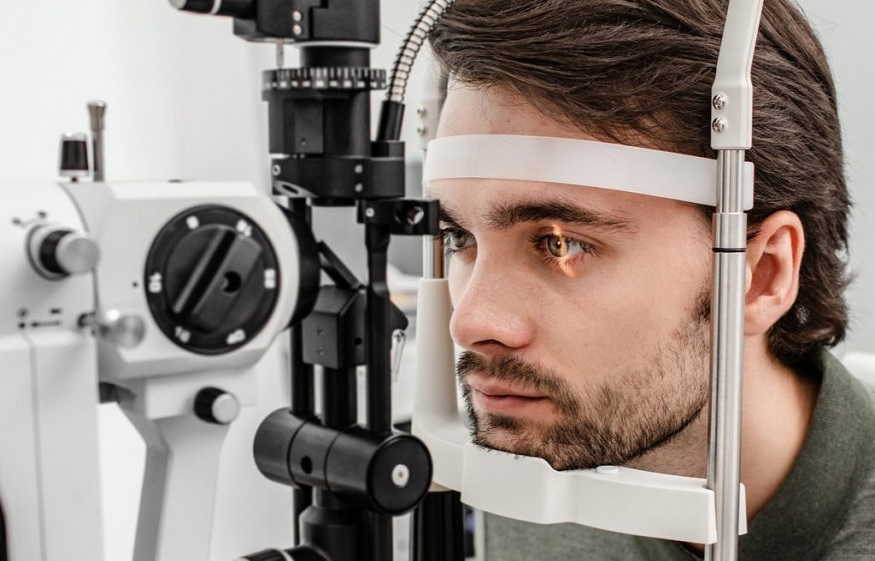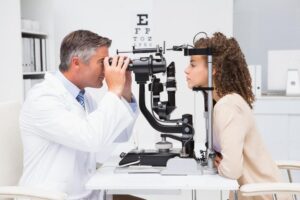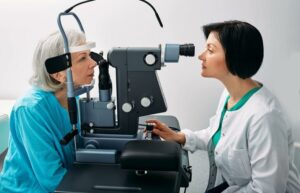The Significance of Eye Checkups

The eyes are one of the most significant senses and are among the most sensitive organs in the body. Despite this, eye checkups are frequently neglected, resulting in many individuals losing their vision and requiring glasses.
Visual Acuity Test vs Eye Exam
The average public’s opinion of eye exams is that they are solely for determining the corrective lens prescription. Yet, a comprehensive eye exam involves much more than visual acuity tests.
Visual acuity tests evaluate the eyes’ ability to read at a certain distance. The patient is instructed to read different font sizes with one eye closed, then both eyes closed, and with both eyes open.
The optometrist alters the lens combinations until the correct power is discovered based on the ease with which the patient can read alphabets and characters.
This is the most fundamental and manual way of testing visual acuity, and non-specialists and local opticians frequently use it. In addition, ophthalmologists use a mechanical test to approximate ocular power.
In contrast to a conventional visual acuity test, a comprehensive eye exam examines other areas of visual function.
An optometrist or ophthalmologist usually conducts it with the appropriate credentials. They check for signs and disorders such as retinal detachment, glaucoma, cataract formation, and macular degeneration.
Several major health conditions, such as diabetes, hypertension, etc., might affect visual function and are thus included during comprehensive eye exams. Ophthalmologists typically take a patient’s medical history and record any concerning medical issues. Yet, it may also operate in reverse on occasion.
A thorough inspection of the eye’s interior tissues can reveal these dangerous disorders. This may serve as an early signal for proactive diabetes, stroke, or hypertension care.
The Significance of Eye Exams
Eye exams evaluate both near- and far-sightedness for visual function. The basic visual acuity assessment determines if and when a person will require their first pair of glasses.
It also illustrates the periodic adjustments required based on the improvement or decline in visual function over time.
In addition to near- and farsightedness, optometrists typically examine patients for any other ocular complaints.
Although astigmatism is a relatively common condition, it frequently causes great distress in daily life. Optometrists also determine the need for cylindrical power during these examinations.
Once completely grown, many eye symptoms and disorders are permanent or extremely challenging to treat. Thus, thorough examinations of the lens, retina, and optic nerve are essential components of a routine comprehensive eye exam.
Cataract is a disorder characterised by the opacification of the eye’s lens, resulting in impaired vision. Prompt diagnosis of cataracts and lens replacement surgery are crucial to restoring normal vision.
A retinal detachment, a medical emergency, can result in total blindness if not treated promptly and effectively. The early detection of any such condition during routine eye examinations might be advantageous.
A comprehensive eye examination can also detect disorders such as strabismus (misaligned or crossed eyes), amblyopia (inconsistent processing of pictures by the brain from both eyes), and age-related macular degeneration.
Recommended Eye Examination Frequency
Whether a patient requires merely a visual acuity test or a thorough eye checkup, and how frequently, is solely determined by the patient’s present ocular health.
Nonetheless, as a general rule, children require less frequent thorough eye exams than adults, who should have their eyes examined at least once every two years. In the elderly age, doctors prescribe more frequent eye examinations.
Those whose occupations are visually demanding are also encouraged to have their eyes examined more frequently than once every two years.







